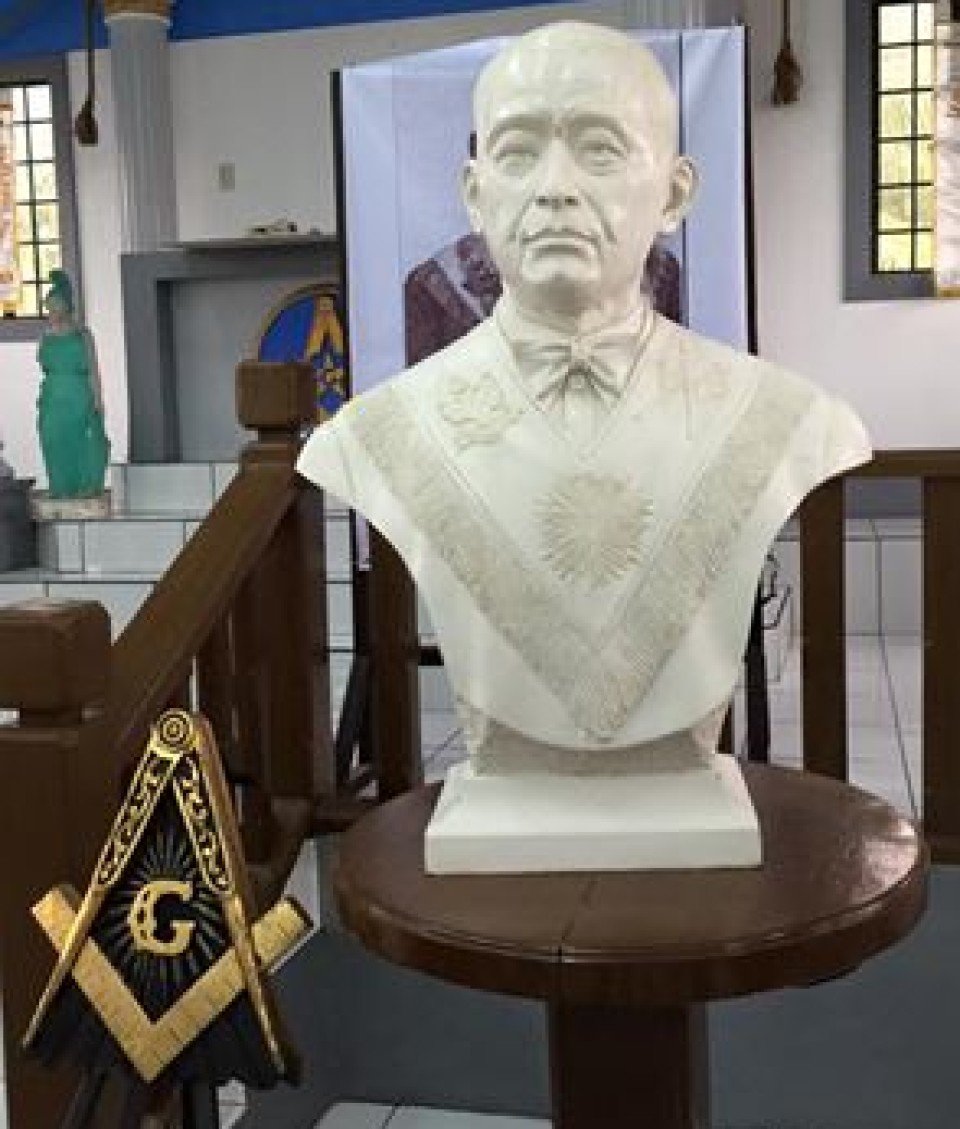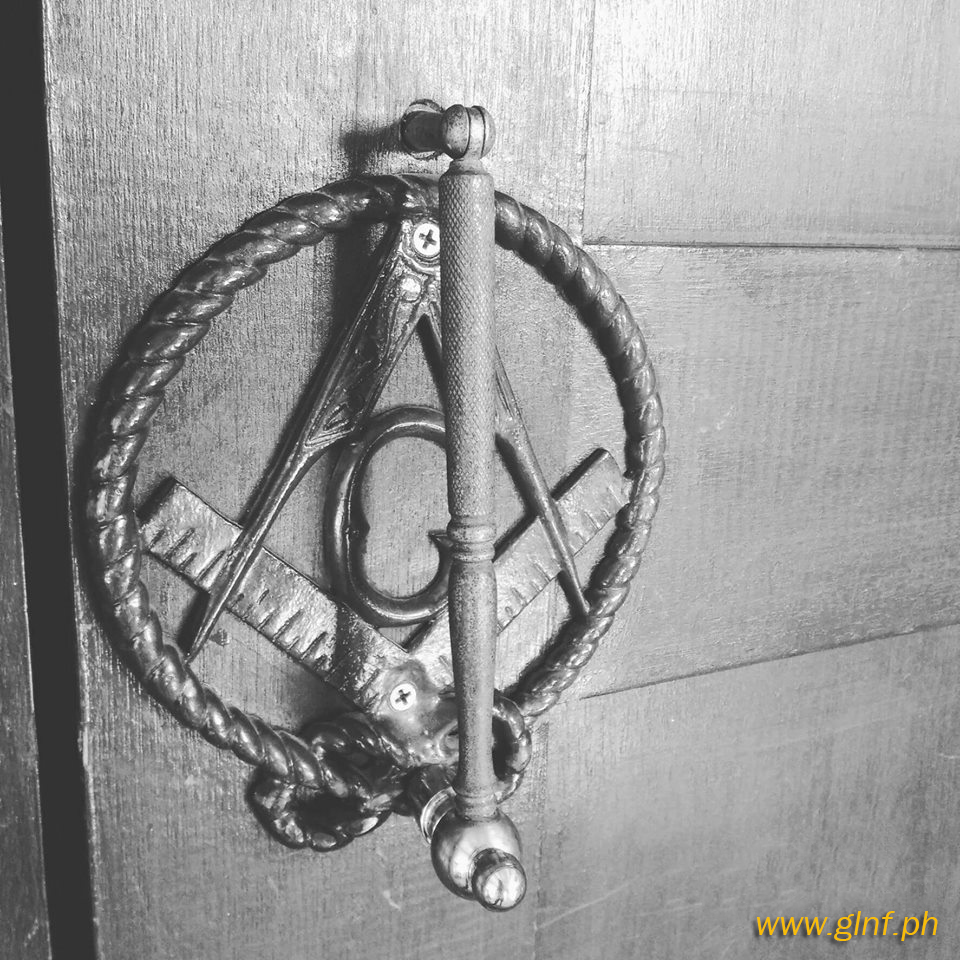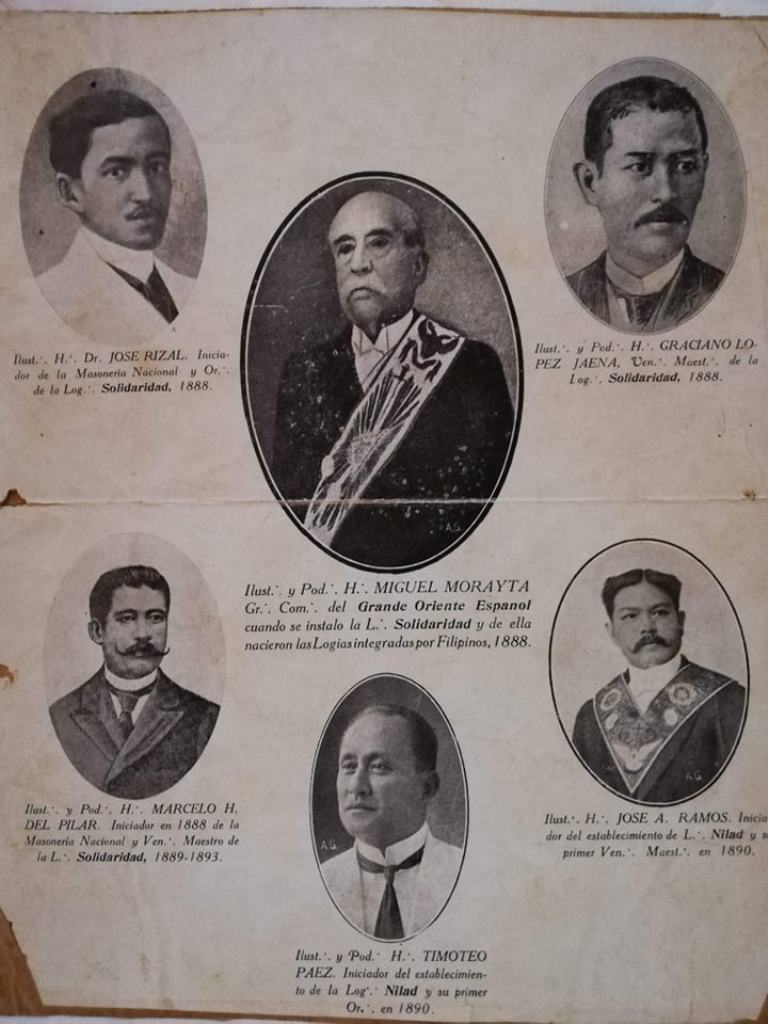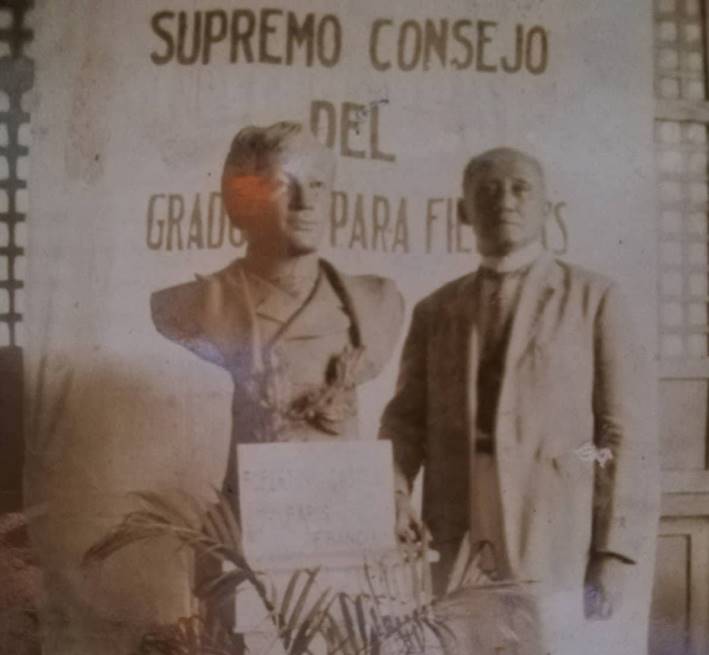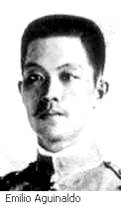HISTORY OF FREEMASONRY IN THE PHILIPPINES
EXCERPTS FROM THE “HISTORY OF FREEMASONRY IN THE PHILIPPINES”
BY SOV.’. GRAN.’. COM.’. GERONIMO S. ESGUERRA
“All history is the record of a great man; admiration of great men is deep-seated in mankind; this admiration, which is hero worship, is the basis of society, the influence vivifying man, and the foundation of religion…..The hero, who is characteristically inspired, sincere, loyal, and reverent, and who possesses insight and a strong sense of duty, is the ablest man of any generation; he is a doer who will lead people aright; and he will be only as great as the age that produces him.” – THOMAS CARLYE (1785-1881), Scottish essayist and historian.
“The first law of history is not to dare say anything false; and to dare leave out anything of the truth; that there be no suspicion of favor in writing and no simulation.” –POPE LEO XIII, Encyclical Saepucemero Considerantes, 1883
MAGDALO LODGE – THE MOLE IN THE HISTORY OF FREEMASONRY IN THE REPUBLIC OF THE PHILIPPINES
CHAIN OF EVENTS – HISTORY OF MAGDALO LODGE AND THE DOWNGRADING OF ITS FOUNDER
1914 – Several Kawit members of Pilar Lodge No. 203 of Imus, Cavite formed a separate Lodge under dispensation and named it “Magdalo” symbolic name of General Emilio Aguinaldo in the Katipunan.
Charter members of Magdalo Lodge, were the following: Emilio Aguinaldo, Felix Cajulis, Canuto Encarnacion, Servillano P. Herrera, Pelagio Ignacio, Benedicti Ilano, Silvestre Legaspi, Vicente Marquez, Severino Palugod, Daniel Sambong, and Lope Sayo (11 in all).
December 21, 1914 – Gran Maestre of La Federacion del Gran Oriente Espanol in Madrid granted charter to Logia Magdalo and designated it No. 371. Logia Magdalo was located in the residence of General Emilio Aguinaldo (now Aguinaldo Shrine).
1914 – Elected officers for 1915 were:
Her...Emilio Aguinaldo, Venerable Maestre;
Her...Felix Cajulis, Primer Vigilante;
Her...Lope Sayo, Segundo Vigilante;
Her...Silvestre Legaspi, Tresorero; and
Her...Daniel Sambong, Secretario.
February 1915 – The first installation of Logia Magdalo No. 371. Manuel L. Quezon was one of the guest among the brethren. La Federacion del Gran Oriente Espanol in Madrid was not in fraternal communication with Grand Lodge of Free and Accepted Masons of California, U.S.A., mother of the Grand Lodge of the Philippine Islands. For this reason, Magdalo Lodge No. 371 was not recognized by Grand Lodge of the Philippine Islands.
1916 – Venerable Maestre Emilio F. Aguinaldo was re-elected.
1917 – Hermano Felix Cajulis was elected Venerable Maestre.
The history of masonry in the Philippines was marked, however, by a period of growth pains, when in 1912 American masons in the country formed the Grand Lodge of the Philippine Islands. This brought two Grand Lodges – the other one being the Grand Regional Lodge under Gran Oriente Espanol – face to face in the question of territory and jurisdiction.
1917 – The two Grand Lodges laid the ground work for a fusion and for the next few years relationship between the two was sweet. Grand Regional Lodge and Grand Lodge of the Philippine Islands formed committees to lay the ground work for a fusion of the two jurisdictions. Grand Regional Lodge approved fusion but this was disapproved by the Grand Lodges of the Philippine Islands, and demanded that each Lodge under the Grand Regional Lodge be admitted through affiliation.
Manuel L. Quezon – Was the head of the committee on the fusion of the Gran Oriente Espanol lodges of the lodges of the Grand Lodge of the Philippine Islands. He was a Master of Kadosh, Rizal Consistory, in 1927 and 1928.
February 13, 1917 – Logia Magdalo No. 371 was recognized and affiliated by the Grand Lodge of the Philippine Islands and designated Magdalo Lodge No. 31, with 73 members in good standing.
1918 – Wor. Bro. Felix Cajulis was re-elected Worshipful Master of Magdalo Lodge No. 31.
But political reasons resulted in some misunderstanding, which led to the return to the former two jurisdictions. Another reason was Filipino Masons were offended by what they perceived to be American snobbery in the lodges.
“The backbone of the Filipino-Spanish revolution and Filipino-American war were all masons under Gran Oriente Espanol, “devide et impera” was the American strategy to conquer.”
Washington administration under President William McKinley underestimated the Filipino capacity to wage war. Moreover they failed to see that Aguinaldo had become the incarnation of the Filipino’s aspirations for nationhood. Washington military strategists had thought that two months would be enough to crash Aguinaldo’s army of little brown men armed with primitive weapons and near obsolete guns they had seized from the Spaniards. They were wrong. The Americans did not reckon with the fact that the Filipinos were fighting not only in self-defense against them but also with a new-found sense of national pride borne of their successful revolution against Spain. Thus when the dust and smoke of battle had vanished the victorious Americans had it ruefully admit their tremendous losses in men and material – 4,234 soldiers of the 124,000-man U.S. Eight Army Corps killed in a total of 2,811 recorded battles and at a cost of Php 600,000,000 – a huge amount in those days – spent by the McKinley administration in their first imperialist venture in Asia.
The Philippine-American war (1899-1901), 16,000 Filipino soldiers killed and 900,000 Filipino civilians died from famine and disease.
Control of the Filipino minds was the first priority of the American colonizers, “divide and rule”
1919 – The Gran Oriente Espanol – whose legal powers were never sought to effect the fusion – finally realized its dream of re-establishing itself in the Philippineswith a mandate granted to Mariano Tenorio and Walter Bruggman to re-organize its symbolic lodges in the Philippines and revive its Scottish Rite Bodies in thePhilippines.
The two had a strong sales pitch. They carried the name of the Gran Oriente Espanol, a Masonic body which at that time was a valuable element in the dissemination of Masonic ideals in the country, and to which many old Filipino masons still felt a strong attachment and affection. They also offered the opportunity to continue practicing the Scottish ritual, which they preferred over the York Rite ritual because it was more in time with their temperament.
1923 – The rift between Gen. Emilio Aguinaldo and Manuel L. Quezon started. Quezon, major in the Filipino revolutionary army whose commander in chief was Gen. Emilio Aguinaldo. The followers of Manuel L. Quezon revived the rumors that Aguinaldo had ordered both the execution of Andres Bonifacio and the assassination of Gen. Antonio Luna.
1923 – Bro. Teoderico A. Jimenez was elected Treasurer of Magdalo Lodge No. 31 – He wanted that all properties of the Lodge be inventoried.
1924 – Meanwhile, during a reception for the visiting Prince of Wales “Many Filipinos of rank in the hierarchy were not allowed to attend the ceremonies going inside the Masonic temple.” Because of this racial discrimination, which is described as a perennial sore of humanity,” broke away from and re-established the old orders called the “Filipino Body” and the “American Body.”
1924 – Asserting their right to formally constitute a Masonic power in the land of their birth, Filipino masons moved to institutionalized for themselves the Supremo Consejo del Grado 33 Para Filipinas under the jurisdiction of the Grand Regional Lodge founded in 1907. this regional lodge was under the Gran Oriente Espanol, which had established Masonic lodges in the country in the late 1800’s. The Supremo Consejo del Grado 33 Para Filipinas was duly organized and incorporated on July 4, 1924with the purpose of inculcating the principles of ancient, free and accepted Masonry.
July 4, 1924 – The Filipino body, in a General assembly attended by more than 300 Master Masons from all over the country, unanimously adopted a proclamation saying that the Philippines is an exclusively Filipino Masonic territory under the jurisdiction of the Supremo Consejo del Grado 33 Para Filipinas headed by Soverano Gran Commendador Timoteo Paez and his council. Among the members of the council were Dr. Barcelona, Judge Rodas, Geronimo Santiago, Atty. Ruperto Castillo Tirol, Atty. Francisco Varona, Don Vicente Liwanag, Elias Asuncion, and others. This Supreme Council was founded by acclamation by Filipino Masons at a time when no other such council existed in the Philippines.
After its constitution, the existence of the Supremo Consejo del Grado 33 Para Filipinas was formally proclaimed to the four corners of the world on December 30 – Rizal Day – of the same year.
1927 – Bro. Teodorico A. Jimenez was elected Worshipful Master of the Magdalo Lodge No. 31 and re-elected the following year. It was during his second term that the lodge was split over the question of registry of all lodge properties in its name. Some brethren sympathetic to the charter members (Old Guards) suggested such action should be deferred to a later date but after ten months of confusion, the majority members of Magdalo Lodge No. 31 unanimously approved a resolution on October 6, 1928 asking the Most Worshipful Grand Lodge of the Philippine Islands for the change of name Magdalo Lodge No. 31 to Ibarra Lodge No. 31. Four days later onOctober 10, 1928, the Grand Lodge Master M.W. Bro. Teodoro M. Kalaw, granted the change of name from Magdalo Lodge No. 31 to Ibarra Lodge No. 31.
From October 10, 1928, when Magdalo Lodge No. 31 was changed to Ibarra Lodge No. 31 Wor. Bro. Emilio Aguinaldo ceased to attend lodge meetings and was declared a dormant member.
The Secretary of the Supremo Consejo in the City of Manila contacted Hermano Canuto F. Encarnacion and organized the Magdalo Lodge designated No. 79. Among the members of the Lodge were Silvestre Vales, Victoriano Tulao, Pastor A. Encarnacion, Aurelio Santonil, Daniel Sambong, Gabino Toledo, Agapito Quiamson, Simon Ronquillo and Florentino Santonil.
Logia Magdalo No. 79 was transferred to Sta. Isabel barrio of Kawit Cavite and they held their works (Tenida) at 96 Elementary School (now Potol – Sta. IsabelElementary School). Hermano Canuto Encarnacion was the first Venerable Maestre of Logia Magdalo No. 79. Hermano Emilio Aguinaldo attended the Tenidas of the Logia Magdalo No. 79 from time to time while tending his farm at Naik in quiet solitude.
G.’.L.’.N.’.F.’.
UNITE NOW
History repeats itself in cycles. A diligent study of History makes it possible for us to perceive the things yet to come that our progress through the Ages might wisely be controlled. Viewed as such, History becomes a useful, living covenant between the Past and the Future. History is not, as some people want to believe, a chronology of persons and events from which one may read and derive “a priori” principles supporting the claim to superiority, as if superiority, is measured by the height of a Family Tree. Unfortunately for Masonry – and for the Philippine Family in particular – there are still those who share this view of History going about us with superior air about them. The present chaotic condition of Freemasonry in the Philippines is not new in the long History of the Fraternity. No Brother, much as he desires to bridge the gap, entertains the sincere belief that any historical and legal pronouncements alone, however erudite. Can bring the much needed order into the chaos. However, it cannot for a moment be doubted that in the heart of every Brother is the Supreme desire to bring harmony and peace to the present melancholy condition of Masonic affair. The History of Freemasonry in the Philippines from the time the first American Mason landed in Manila until the present, has a faithful counterpart in the early History of Masonry in England from 1717, when the Four Lodges met and formed the Grand Lodge of England, until 1813, when the Grand Lodge of the “Moderns” and the Grand Lodge of the “Ancients” united to form the United Grand Lodge. In 1751 a group of Irish Masons seeded and established their own Grand Lodge in the Southern part of England and called themselves the true Ancient Masons. It was from this Body that the biggest and most influential Jurisdictions in the United States were Warranted. These are the so-called York Masons in the United States and in the Philippines today, and who were called irregular Masons then, although many of them were Masons from Ireland. From this short account, a Historical cycle becomes apparent and one may perceive at once that the present Members of the Gran Logia Nacional de Filipinas are the mirror-images, historically speaking, of those Ancient Masons. These Brothers seceded also from the Grand Lodge of the Philippines for reasons both honorable and sufficient, and they, too, were Freemasons even before the American “Yorks” came to the Philippines. It is not necessary here to give a detailed story of the very heated arguments that went on and on both in England and America between the Moderns and the Ancients from 1751 until 1813 a period of over sixty years. The important event worthy to be recalled was the final union of the two Grand Lodges made possible by two blood-brothers the Duke of Kent and the Duke of Sussex, Grand Masters both, of the Ancients and the Moderns, respectively. The Ancient Masonic History in England as well as the History of the Order both in the Continent of Europe – especially in France – and in America, teaches one simple, cardinal lesson, and it is this: – The forward march of Freemasonry, from diversity to unity is irresistible. We, of this generation, whether we like it ot not, cannot prevent the final Union, under one United Grand Lodge of the Philippines, of all Filipino Masons. And if we of this generation, cannot, and will not, UNITE NOW, the next generation will, without doubt, do that enviable labor of love for us. I say “enviable” because no one conscious of the working of History can fail to see that Masonic Niche now prepared and ready to receive a modern Duke of Kent and a Duke of Sussex, and Brothers all with big hearts and bigger understanding. The cold logic of Masonic History demands the completion of the Temple. With the impossible we should disagree, with the probable we could compromise, to the inevitable we must acquiesce. UNITE NOW.
New York, New York TALIBA
(PRINTED IN SOLIDARIDAD 25th anniversary PUBLICATION, ENGLISH EDITION)


